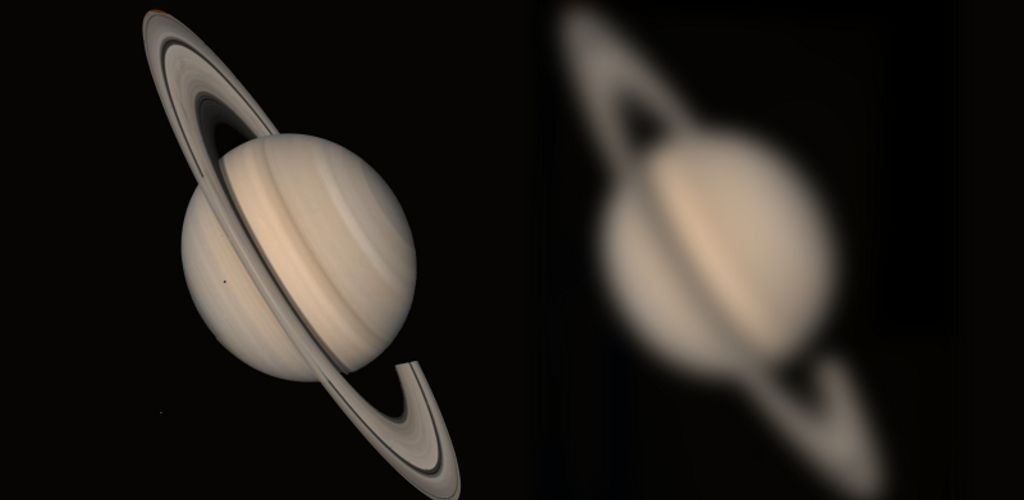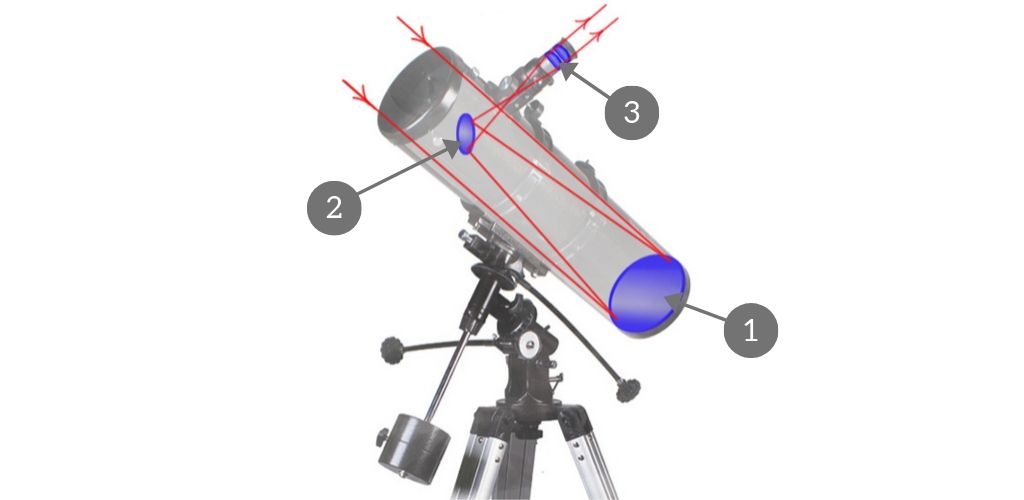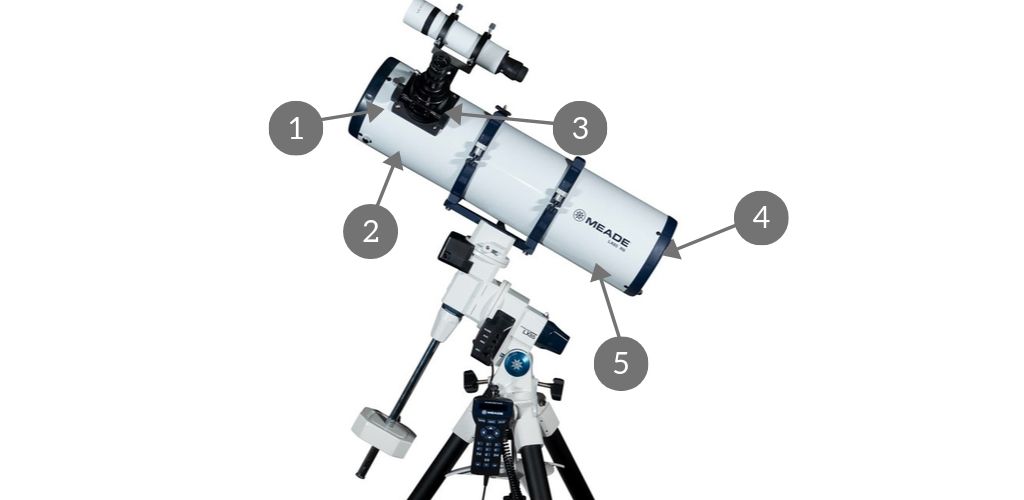
Newtonian reflectors, the choice of versatility
Reflecting telescopes, also known as Newtonian reflectors, are good telescopes for amateur astronomers because they offer a good aperture/price ratio. They are versatile and can be used to observe the Moon and planets as well as objects from the deep sky. However, they require a little more maintenance than the refractors because the mirrors must be aligned in the tube, between them and with the eyepiece holder. This process is called collimation.

Although it may seem intimidating, if the user is meticulous and methodical, it is simple and with practice quick enough to achieve and should only be done from time to time. Because the tube of the telescope is open on the sky, the mirrors can become damaged and get dirty. They can be cleaned or, after a few years, have them treated by a professional. It’s relatively inexpensive and it’s like having a brand new telescope. That’s why if this is the first time you choose a telescope, you have to think carefully about your needs.
The history of the reflecting telescope
The invention of the reflective telescope is attributed to Isaac Newton, although others had similar ideas for such a telescope at about the same time. The only type of telescope used by astronomers in the early 1600s was the refracting telescope (or refractor) using glass lenses in a tube to collect and focus light. Several scientists knew, however, that there was another way to do this, using a mirror.

In 1668, Newton made a small telescope that used a parabolic mirror made of polished metal that sent the reflected light back to the top of the tube on a smaller, flat mirror angled at 45°. From this secondary mirror, the image was reflected at right angles to the eyepiece, where it was enlarged. This type of telescope has been called “Newtonian Reflector” and is still in widespread use today, even though its size and construction method have seen great advances since Newton’s.
However, the problem of mirrors made of metal, from a material called “speculum”, an alloy of copper and tin that can be polished, is that it was not until almost 100 years before they became popular, when advances in technology made glass mirrors.
The advantages of the reflectors VS refractors
It was soon realized that reflective telescopes had many advantages, including fewer optical problems, or aberrations, than the refractors of the time. In addition, and this is probably the biggest advantage of all, you could easily make mirrors much larger than the lenses. With advances in construction methods and technology, mirrors, and therefore telescopes, have become larger. This made it possible to discern less brilliant objects and, thanks to a better resolution, to observe smaller details.
Because it is cheaper to produce mirrors of a certain size than lenses of the same size, the reflectors are advantaged by their quality/price ratio. Because of these qualities and some of their inherent optical advantages, Newtonian reflectors are widely used by astronomers who want to study deep-sky objects that are inherently faint. But Newton’s reflectors do not only have advantages. Because of the secondary mirror that effectively blocks some of the light that enters the tube, the contrast of the images can be changed.
In time, other types of telescopes than Newtonian reflector have been created, some of which have tried to combine the advantages of reflectors and refractors. These catadioptric telescopes come in many forms and may be useful for some types of observation and study, but Newtonian reflector is still widely used because it represents an effective and less expensive solution for amateurs and professionals worldwide.
How a reflecting telescope works

Anatomy of a reflecting telescope

1) Secondary mirror
Inclined at a 45°angle, this small flat mirror has an elliptical shape that appears round when viewed through the tube of the eyepiece holder.
2) Spider
The spider of a reflecting telescope is the device that keeps the secondary mirror centered on the primary mirror. The supports must be thin so as not to block the light coming down the tube.
3) Eyepiece holder
The eyepiece holder is a tube that can be adjusted by pushing it in or out of the telescope tube to focus on the object in the eyepiece.
4) Primary mirror
The primary mirror of a Newtonian reflector must be of good quality and preferably of parabolic shape because it will give cleaner and clearer images. The quantity of celestial objects you will see trough a reflecting telescope will depend on the diameter of the primary mirror.
5) Tube
The cylindrical tube that makes up the body of the reflecting telescope contains the mirrors, the “spider” and the focus ring. Its size depends on the diameter of the primary mirror.